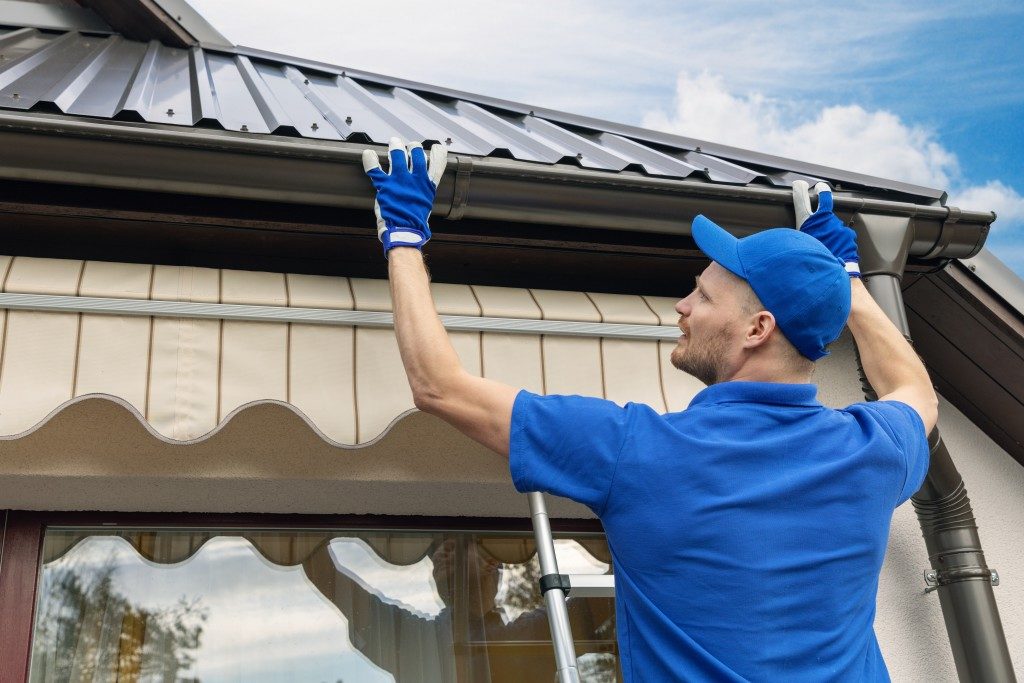The roof is an essential part of your home because it ensures that external components and extreme weather do not damage the interior of your home. But it needs to be complemented with a well-maintained gutter and downspout system to prevent rainwater, leaves, and other debris from clogging the drains.
1. Clean your gutters more often
As a homeowner, you should regularly check your gutter channels and clean them at least once a month to ensure rainwater can drain freely. It is simple; get a ladder and a gutter trowel. Use the ladder to climb to the height of the gutters and utilize the gutter trowel to remove leaves or any other debris out of the gutter system. After scooping all the litter out, run water through the gutters and see if the water is flowing smoothly.
2. Install gutter protectors
Many residential and commercial roof installation experts say gutter guards significantly reduce the need to clean roof gutters. The most common and cost-effective gutter protector is a steel wire mesh that allows water to pass through but block any sizable debris. Fitting gutter protectors removes the need for you to scoop or flush inside the gutter system. You only have to clear the debris off the gutter guards, and you are good to go.
3. Inspect your downspouts regularly
Do not forget to clean your downspouts every time you work on the gutters. If you do not have the right equipment, you can use a stiff wooden stick to push dirt out of the downspouts. But it would be more efficient if you use a high-pressure hose to force rubbish out the vertical drainage. Make sure you can see through the downspout after cleaning it. Additionally, check the joints of the downspouts and ensure they fit together well to prevent them from bursting out during heavy downpours.

4. Think about installing downspout add-ons
Many downspouts only utilize small splash blocks that funnel water a few feet from your house. The downside of this is they need a regular check-up as they can be easily carried away or displaced when it rains heavily. Go the extra mile and fit downspout extensions on your vertical drainage. These are permanent tubes that are attached to the downspouts and are long enough to lead flowing water a reasonable distance from your house. They are much better than standard splash blocks because they allow draining water to drop in the ground in a more controlled way.
5. Conduct regular repairs
Inspect your gutter and downspout system often. If you notice cracks or holes, or any signs of corrosion or sagging, address them immediately. If you come across any damage you cannot handle on your own, don’t hesitate to ask for professionals to help.
Live at your home in peace
Consider the above ideas as the starter package for living in a house free of drainage problems. Your home is your sanctuary; a weak roof drainage system should not affect your comfort and make you always worry about clogged rainwater.




